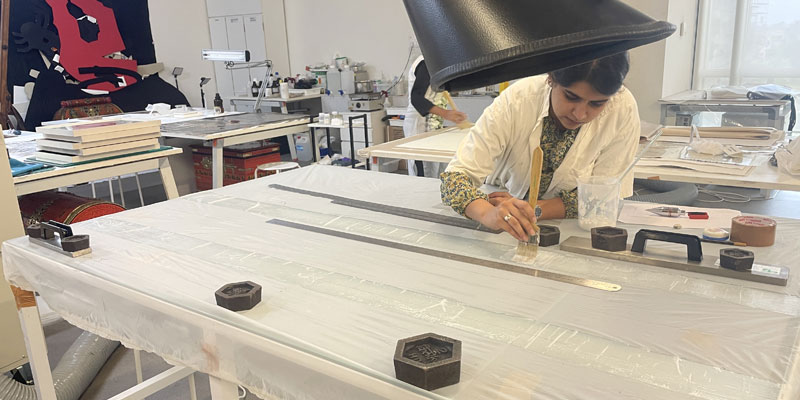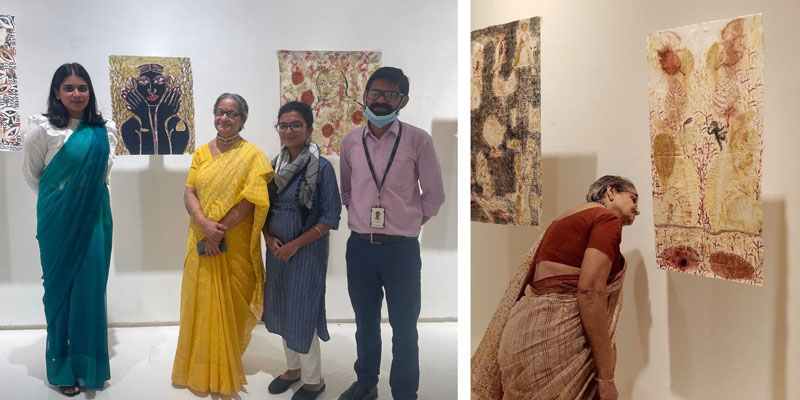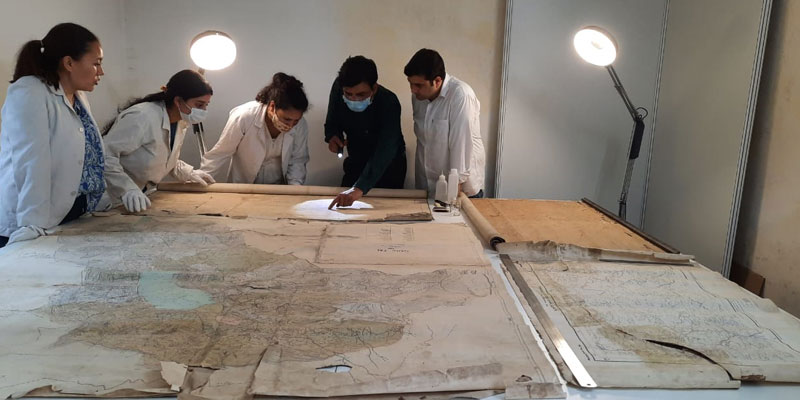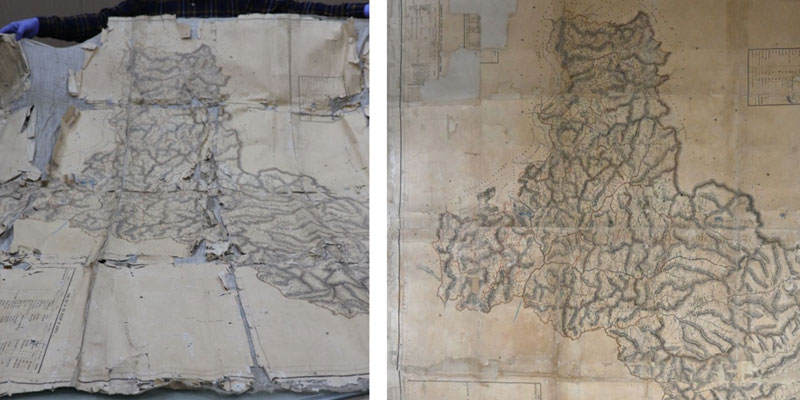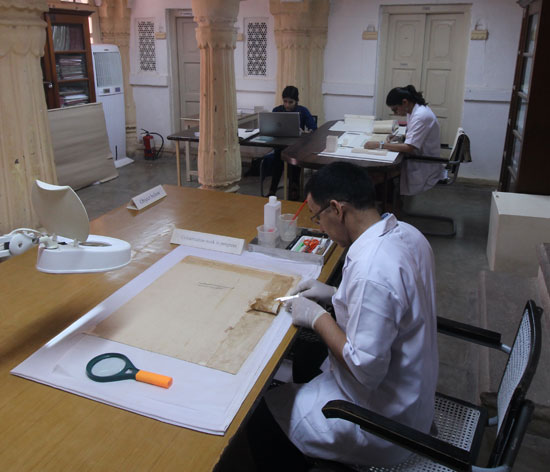
“One of the reasons which compelled me to pursue a career in art conservation was its inter-disciplinary nature. The Art Conservation Initiative taught me not just material conservation, but how to deal with ethical and philosophical dilemmas as well,” says Shreyan Banerjee, one of the conservators trained under the Tata Trusts’ Art Conservation Initiative.
Conservation is both an art and a science. The conservator needs to be a fastidious worker, a critical thinker and an aesthete at heart. While their primary relationship is with the object under their care, a conservator’s responsibilities do not end there. They must know exhibition strategies and budget management; plan infrastructure; network and build collaboration with allied institutes; train and build awareness of conservation among other duties.
But, it is a challenging career. The work involves erratic work hours and fieldwork. Since the conservation sector in India lacks academic research and training avenues, every object that comes into the lab brings forth new challenges for which a conservator must devise innovative solutions. Mostly, the conservators learn on the job, and sustain themselves in the field through sheer enthusiasm, a love for the arts and a job well done.
Transforming the field
To mitigate these issues, and to build a pool of talented conservators who are conversant with new conservation pedagogies, the Trusts established their Art Conservation Initiative in 2019 and embarked on a four-year partnership with five institutes across India – Museum of Art and Photography (MAP), Bangalore; Himalayan Society for Heritage and Art Conservation (HIMSHACO), Ranibagh, Uttarakhand; Kolkata Institute of Art Conservation (KIAC), Kolkata; Chhatrapati Shivaji Maharaj Vastu Sangrahalaya (CSMVS), Mumbai; and Mehrangarh Museum Trust (MMT), Jodhpur. One of the objectives of the initiative was to hire and train three conservators at each of the five institutes.
The 15 conservators came from varied backgrounds; what they had in common was a passion and commitment for art conservation. During the course of their engagement, the conservators were mentored by the academic consultant to the Trusts’ Art Conservation Initiative, through in-person visits, weekly review sessions, and countless phone chats. The weekly review sessions, started during the pandemic when the conservation labs were shut, became a forum for the conservators to discuss case studies and the conservation research they were undertaking.
A view from the field
Placed across the five institutes where the conservation centres were at different stages of establishment, the fifteen conservators learnt how to handle multiple challenges and projects while concentrating on their primary responsibility of conserving art objects. In establishing the labs, they learnt the processes of equipment procurement, invoicing and taxes, and supply chain logistics.
In some cases, they had to devise strategies not just to conserve the work, but to also aid in its handling and exhibition. For instance, the KIAC team in Kolkata consulted artist Arunima Choudhary and curator Nancy Adajania in devising a method to allow the artists’ eco-prints (contact prints on fabric using plant material) to ‘hang’, akin to curtains, to match the delicate and ephemeral quality of the prints. The sensitive prints were craftily attached from the wall, creating the illusion that the prints were suspended mid-air. A Q&A session with one of the KIAC conservators, Keerat Garcha, describing their interventions for this exhibition can be viewed here. Simply put, they learnt to improvise.
Each team learnt to work in tandem with the other. So, if one team sourced conservation material from a vendor who may not necessarily cater to conservation, they shared their recommendations on the forum. Each team would consult the others on conservation methodologies, and share resources and knowledge, thus building up capacity amongst themselves.
Seizing opportunities
The teams also learnt how to network and build alliances with other institutes. Most conservation labs are attached to a museum or a gallery space, and work is often generated in-house. However, HIMSHACO does not have a collection of its own to conserve. Under the Art Conservation Initiative, HIMSHACO has been conducting field surveys of smaller collections since 2019, helping to map the museums and collections in their geographical proximity. They have also built long-term partnerships with other institutions and have received independent conservation projects. So, recently, when the Commissioner of Kumaon released visuals of several large-sized historical maps in various stages of deterioration, and asked for assistance to help preserve the collection, the HIMSHACO team reached out. Following the condition assessment and budget discussions, they were awarded the contract to conserve 23 large-sized historical maps. The team will return the conserved maps to the custodian with proper housing and storage strategies in place for long-term preservation.
Key outcomes
When the Trusts embarked on this initiative in 2019, one of the primary objectives was to hire and train these fifteen conservators. Today, the fifteen conservators trained under the Art Conservation Initiative have emerged as the next generation of conservation professionals with skills that extend beyond conservation. They are also proactively seeking out fellowship and training opportunities to enhance their skills. One of the conservators from MAP, Bangalore, Rajeev Kumar Choudhary has been awarded the coveted Indian Conservation Fellowship and will be training for three months at the Metropolitan Museum of Art in New York in 2022. Another conservator, Sahitya Raja, from MMT, Jodhpur, recently presented a paper at the International Council of Museums – Committee for Conservation (ICOM-CC) Metals 2022 conference at Helsinki, Finland.
Over the years, they have also become trainers and mentors, guiding not only the work of interns and new conservators joining their teams, but also serving as visiting faculty for the 3-month training courses being conducted under the Art Conservation Initiative, adding to the repository of knowledge for those who join the field. “Under the Art Conservation Initiative, not only did I get to work as a conservator with one of India’s most dedicated conservation centres at CSMVS, Mumbai, but also to step up and supervise the three-month Training Course in Conservation of Natural History Specimens as course anchor. It has taught me invaluable lessons on how to develop curriculum for training courses in conservation, ethics of conservation training and project management,” says Haseeb Khan, CSMVS conservation centre.
“As a non-urban centre of the Art Conservation Initiative, HIMSHACO has built lasting relationships with smaller museums and collections in the Uttarakhand, Himachal Pradesh and Ladakh regions through this project. As a conservator working here, and hailing from Himachal Pradesh myself, I have become invested in protecting the regions cultural heritage, and will continue to work in this field and geography, long-term” – Siddharth Chandra, HIMSHACO conservation centre
